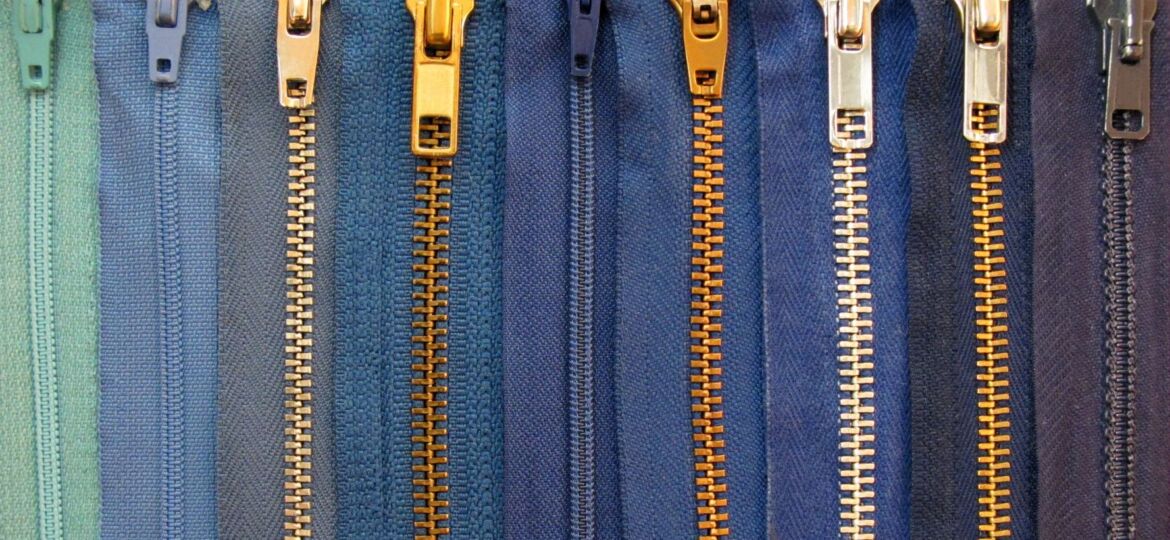- No products in the cart.

While it fulfils its role, a zipper is the most common of things. We design and make clothing that is founded on the interplay of all functional components, including zippers. Our strength lies in the details, and we are aware of their importance and how they play out in nature.
We’ve tried many zippers, many combinations, and their practical applications for more than 40 years now. We have clearly defined the minimum requirements for our clothing, and we stick to them. Zippers from world-famous manufacturers are the standard for ASI. The proven quality, long life, and functional scale have convinced us of the rightness of this decision every day for more than 100 seasons now.
We’ll show you what zippers we use, what functions they fulfil, and what benefits they offer to ASI brand customers.
Basic model of a zipper:
1. Tape: the basic textile base to which the teeth of a zipper or a coil are anchored on one side and joined to the edge of the textile material on the other side.
2. Teeth elements: two rows of protrusions that fit tightly together and create a joint.
3. Slider: The task of the slider is to connect or separate the zipper elements. The slider’s construction determines the functional benefits of the zippers.
4. Pull tab: this is connected to the slider, and pulling on it opens or closes the zipper. In terms of practical use in the field, in wet or cold conditions, its shape, size, and adhesion are important.
What kinds of zippers will you find on our clothes?
1. Coil zipper: one of the two basic zippers that you’ll find mainly on clothes made of light and flexible materials or on the pockets. The basis of the construction is a coil connected with the tape. Such zippers are durable and, at the same time, flexible.
2. Molded or toothed zipper: consists of separate plastic, interlocking teeth that are directly joined with the tape. We use them particularly in the stressed areas of the clothing. A toothed zipper is the basis for water resistant and waterproof zippers.
3. Reverse zipper: a reversed coil zipper with rubberized tape to achieve overall water resistance and wind resistance of clothing.
4. Metal zipper: the oldest type of zipper used, for example, on jeans. The zipper is durable and has a long life, though it requires care and more gentle handling.
5. Invisible zipper: we use this when a zipper needs to blend in with the design. The specific construction of this zipper can be found, for example, in the pockets of winter skiing clothes.
Functional benefits of zippers:
1. NON-LOCK: The basic type of slider without a lock brakes. The zipper, therefore, can open spontaneously with any handling. It is used where the zipper is handled only minimally after locking, such as in the automotive industry, household, luggage, etc.
2. AUTOLOCK: The zipper slider is equipped with an automatic lock that locks the zipper at the place where the slider is located and prevents it from opening unintentionally. This type of zipper is standard on the vast majority of our clothing.
3. PIN LOCK: This is a special construction that locks the zipper in the desired position upon positioning the pull tab in the folded form. If the pull tab is not lowered, the zipper remains open and free. This construction is particularly used with coil zippers. We find it on the indivisible zippers of elastic t-shirts and on pockets, as well as on the stressed lower edges of trousers, where it fixes the position of the trousers to the ski boot.
4. TWO-WAY B2B ZIPPERS: This zipper is created by placing two oppositely oriented sliders on one zipper. This allows the zipper to be unzipped from both sides, as needed. We can find it on functional jackets, ventilation pockets, and in places where the opening of the entire zipper needs to be minimized in terms of use. Therefore, you won’t need to unbuckle the chest strap on a backpack to get to the inner pocket. With a two-way zipper, you can adjust the ventilation opening in the armpit and simplify its regulation.
5. WATER-RESISTANT ZIPPERS: Water-resistant zippers are used primarily in the production of waterproof clothing. A zipper is a critical place in any garment, and in our case, it is never 100% waterproof. In terms of specific application, the weight of a zipper, and its rigidity, the use of absolutely waterproof zippers in the production of outdoor clothing is an exception. The reverse zipper tape itself, with the application of thermoplastic polyurethane (TPU), creates a durable waterproof connection by covering the teeth, but the area around the slider and the teeth will still let moisture through. Such zippers do a great job blocking the wind and withstanding normal moisture, such as snow and rain. To increase the resistance to wind and moisture, the zippers are underlaid with tape on the inner side. A standard zipper is often covered with a functional strip from the outside. For clothing made of waterproof materials, the placement of the slider in the upper position after closing the zipper and its “garaging” significantly reduces the risk of moisture penetrating to the inside. Durable zippers have lower flexibility and are more difficult to slide compared to conventional zippers.

